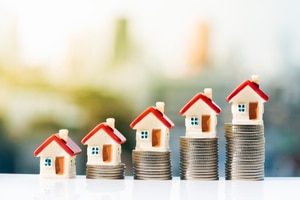Please fill out the details below to receive information on Blue Wealth Events
"*" indicates required fields

Property commentators regularly discuss the general rule of Australian real estate prices doubling every 10 to 15 years. This has been the case over recent decades, but some argue this will slow down. At Blue Wealth Property, our view has been that property price growth may not be as aggressive in the future as it has been in the past. With that said, positive sentiment has returned to the market following a number of helpful changes throughout 2019. Chief among these have been three cash rate drops and corresponding drops in mortgage interest rates.
Research groups such as SQM Research, ANZ and CoreLogic have forecast positive market conditions in 2020, with SQM Research going as far to predict growth that could exceed historic highs in some of Australia’s capitals. This renewed buzz in the market is a welcome change from recent years for investors, but how much further could prices go in the coming years?
One of the key factors influencing the residential property market is a buyer’s access to credit. If mortgages are affordable and readily available, more buyers are able to compete for increasingly high prices. This imbalance of demand over supply then fuels price growth in particular markets. Since markets throughout Australia operate differently, this could mean growth in one area during a correction in another. Unfortunately, the public will usually hear more about areas experiencing correction than those experiencing booms.
If house prices were to double, Sydney’s median would increase to $1.75 million, and Melbourne’s to $1.36 million. Brisbane would hit a more modest $1.07 million which, coincidentally, is the approximate level reached by Sydney in 2017.
By using today’s interest rates as a benchmark (3% per annum), monthly repayments for an 80% LVR 25-year mortgage would look something like this for each city:
| Hypothetical Monthly Repayments at 3 per cent p/a | ||
| Sydney | Melbourne | Brisbane |
| $6,638.96 | $5,159.42 | $4,059.25 |
In order to avoid ‘mortgage stress’ which we will define as repayments being more than 30 per cent of gross household income, the median household income for Sydney homes under mortgage would need to be $22,129.87 per month (or $265,558 per annum). On the other hand, Brisbane’s would need to be just $13,530.83 (or $162,370 per annum).
Brisbane isn’t too far off the mark already. During the 2016 census, the median household income for Brisbane homes under mortgage was between $104k and $130k per annum. Another few rate cuts or pay rises would make a doubling of house prices affordable, at least for that time. Sydney, on the other hand, continues to push the limits of affordability. If interest rates were to increase in the future, Sydney would be exposed to a potential correction similar to that experienced between 2016 and 2019.
Other factors dependent, a persistently low-rate environment in Australia offers optimism for modest capital city markets such as Brisbane. The city’s prolonged price stagnation has continued to make it one of the most affordable blue-chip Australian markets. On this specific measure, Brisbane is one of Australia’s most viable long-term investments.
